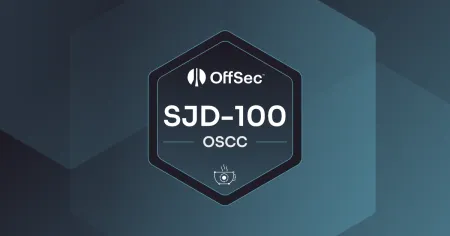Blog
Nov 8, 2024
The Human Side of Incident Response
Effective incident response requires decision-making, adaptability, collaboration, stress management, and a commitment to continuous learning.
5 min read

When a cyberattack hits, things get chaotic fast. The pressure to respond immediately, make the right decisions, and keep communication flowing is intense. At the heart of it all is the human element—people making judgment calls when there’s little time or clear information. Incident responders don’t just rely on technology; they have to think critically, adapt quickly, and keep cool under stress, which can be exhausting.
Cyber incidents are often unpredictable and complex, requiring more than just automated solutions. While detection systems like firewalls, intrusion detection systems, intrusion prevention systems and antivirus software can identify anomalies, they cannot interpret every nuance of an attack or weigh the broader implications for an organization. This is where the human decision-making process comes into play.
Incident responders assess incomplete information, navigate ambiguity, and apply their judgment to manage the situation in real time. They must determine whether to contain the threat immediately or investigate further, balancing speed with thoroughness. The ability to make these split-second decisions defines effective incident response.
Attackers don’t follow playbooks, and neither can incident responders. Every incident presents unique challenges that require responders to pivot and adapt. The best cybersecurity teams don’t just follow protocols or respond to logs in a SIEM—they constantly adjust their strategies to respond to evolving threats.
Whether it’s facing a sophisticated phishing campaign or an advanced persistent threat (APT), incident responders are tasked with staying agile, adjusting on the fly to new developments. This human adaptability is something no automation can replicate—being able to think creatively and adjust under pressure is vital to staying ahead of attackers.
Incident response is rarely a solo endeavor. It involves cross-functional collaboration, requiring seamless communication between IT, security, legal, and leadership teams. Humans excel at translating technical findings into actionable insights, enabling stakeholders to make informed decisions.
Clear, concise communication is essential to keep the response effort coordinated and efficient. Whether it’s explaining the scope of an attack to non-technical executives or working with legal teams to assess regulatory obligations, the human ability to collaborate effectively is a critical piece of incident response.
Incident response is not only a technical challenge but a psychological one. The pressure to act quickly and decisively can create significant stress, especially during prolonged or large-scale incidents. Fatigue, high stakes, and uncertainty can take their toll on responders, impacting their decision-making and overall performance.
Stress management becomes a critical skill for incident responders. Teams that are well-prepared for the emotional and psychological demands of the job can maintain composure, make clear-headed decisions, and sustain performance throughout a crisis. Responders who are able to manage their stress are far more likely to steer their organizations to successful outcomes.
To stay effective in the face of increasingly complex threats, incident responders need to continuously develop their skills. Cybersecurity threats evolve constantly, and so must the people tasked with responding to them. Regular training is essential—not just in technical areas, but also in decision-making, stress management, and cross-functional collaboration.
Comprehensive training programs that simulate real-world attacks give incident responders the practice they need to improve their adaptability and crisis management skills. Building mental resilience through hands-on training prepares teams for the high-pressure nature of incident response.
When it comes to incident response, cybersecurity professionals need more than just theoretical knowledge; they need a learning experience that’s practical, continuous, adaptable, and up-to-date. OffSec’s approach focuses on three core elements: hands-on learning, continuous access to an extensive library of resources, and adaptive pathways tailored to individual needs. By integrating these components, our training equips learners with the skills they need to handle real-world incidents, stay up-to-date with industry developments, and customize their growth journey based on specific goals and roles.
Incident response is best learned by doing, which is why OffSec’s IR-200:Foundation Incident Response course emphasizes hands-on experience in realistic scenarios. Learners work directly within simulated environments, handling real-world-style incidents to develop skills they can apply immediately on the job. This approach ensures a deeper understanding of the complexities involved in identifying, containing, and mitigating threats, rather than relying solely on theoretical knowledge.
The IR-200 course takes a targeted approach to help learners achieve the OSIR certification with confidence. The curriculum is aligned directly with certification objectives, providing structured preparation through practice labs, assessment tools, and real-world scenarios aligned with the entire incident response lifecycle. By honing in on the key skills and knowledge areas needed for the exam, the course ensures learners are not just ready to pass, but fully equipped to demonstrate their expertise in incident response from day one.
OffSec’s commitment to continuous learning is reinforced by the expansive OffSec Learning Library, offering a wealth of content that spans from foundational courses to advanced training. This content includes:
- 7,000+ hours of written content
- 1,800 videos
- 4,200 labs
Learners can explore a wide array of topics, including incident response, threat hunting and security operations in the domain of defensive cybersecurity. With content available at every skill level, OffSec ensures professionals have the resources needed to grow, adapt, and stay ahead of evolving threats.
OffSec’s adaptive learning approach goes beyond just adjusting to individual performance. It includes the ability to create Custom Learning Paths tailored to specific roles or organizational needs. This flexibility allows teams and individuals to focus on the areas most relevant to their responsibilities, building a personalized roadmap for skill development beyond the skills developed in OffSec Courses by supplementing it with additional training and material for an organization’s specific use-case. By catering to different experience levels and providing a variety of real-world scenarios, our training adapts dynamically, helping learners advance in a way that aligns with their unique journey and goals.
Ready to elevate your incident response skills with hands-on, adaptive training? Dive into OffSec’s IR-200 course and gain the expertise to tackle real-world incidents head-on. Get started today and transform your capabilities with OffSec.

Sara Jelen
Sara Jelen is the Content Marketing Manager at OffSec. Through her extensive work as a writer and content marketer, Sara is specialized in the cybersecurity domain. With a background in anthropology and arts, Sara incorporates a human-centric perspective in exploring cybersecurity topics and the movers and shakers behind it.
Cybersecurity leader resources
Sign up for the Secure Leader and get the latest info on industry trends, resources and best practices for security leaders every other week
Latest from OffSec

Research & Tutorials
CVE-2024-9956: Critical WebAuthentication Vulnerability in Google Chrome on Android
Discover CVE-2024-9956, a critical Chrome flaw on Android allowing Bluetooth-based PassKey theft, and learn key mitigation strategies.
Mar 26, 2025
3 min read

OffSec News
Learn Secure Java Development with OffSec’s New Course
Master secure Java coding with OffSec’s SJD-100 course. Enhance app security and gain hands-on experience to secure your coding practices.
Mar 18, 2025
4 min read

Insights
Creating an Inclusive Cybersecurity Culture
Transform your cybersecurity culture by strategically improving women’s representation and cultivating meaningful inclusion.
Mar 17, 2025
4 min read